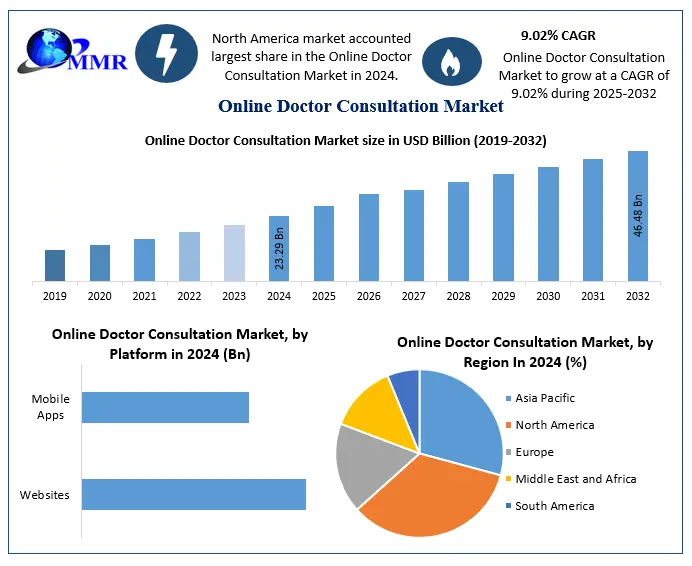The global fitness equipment market Size is projected to grow from USD 13.21 billion in 2024 to USD 17.16 billion by 2032, registering a CAGR of 3.32% during the forecast period. This growth is fueled by increasing health awareness, technological advancements, and a surge in home fitness trends
Market Estimation & Definition
Fitness equipment encompasses a range of devices designed to facilitate physical exercise, improve fitness levels, and aid in weight management. These include cardiovascular machines like treadmills and stationary bikes, strength training equipment such as weight machines and resistance bands, and other specialized apparatus. The market’s valuation at USD 13.21 billion in 2024 underscores its significant role in promoting health and wellness globally.
Get Sample Copy Of the Report : https://www.maximizemarketresearch.com/request-sample/29892/
Market Growth Drivers & Opportunities
1. Lifestyle Changes and Health Awareness
The modern sedentary lifestyle, coupled with unhealthy dietary habits, has led to a rise in chronic diseases and obesity rates. This has heightened the emphasis on regular physical activity, driving demand for fitness equipment.
2. Technological Advancements
Integration of smart technologies, such as wearable devices and cloud-connected equipment, offers users real-time feedback and personalized workout experiences. These innovations enhance user engagement and equipment efficiency.
3. Home Fitness Trends
The convenience of exercising at home has gained popularity, especially post-pandemic. This trend has led to increased sales of compact and user-friendly fitness equipment suitable for residential use.
4. Government Initiatives
Supportive policies and programs promoting physical fitness and well-being have encouraged individuals to adopt healthier lifestyles, indirectly boosting the fitness equipment market.
Segmentation Analysis
By Product Type:
-
Cardiovascular Training Equipment: This segment holds the largest market share, driven by its widespread use in both commercial and home settings.
-
Strength Training Equipment: Gaining traction due to increased interest in muscle building and resistance training.
-
Other Equipment: Includes yoga mats, balance balls, and other accessories supporting various fitness routines.
By End-User:
-
Health Clubs/Gyms: Represent the largest end-user segment, reflecting the popularity of structured fitness environments.
-
Home Consumers: A rapidly growing segment, fueled by the desire for convenient and private workout options.
-
Other Commercial Users: Encompasses hotels, corporate offices, hospitals, and public institutions integrating fitness facilities.
By Distribution Channel:
-
Retail Stores: Traditional brick-and-mortar outlets offering a range of fitness equipment.
-
Specialty and Sports Shops: Focused retailers providing expert advice and specialized products.
-
Department and Discount Stores: Accessible options for budget-conscious consumers.
-
Online Platforms: E-commerce channels offering convenience and a wide selection, increasingly preferred by consumers.
By Gender:
-
Male and Female: Products tailored to meet the specific fitness goals and preferences of different genders.
By Usage:
-
Residential: Equipment designed for home use, emphasizing compactness and ease of use.
-
Commercial: Robust and durable equipment intended for high-traffic environments like gyms and fitness centers.
Country-Level Analysis
United States:
The U.S. leads the global fitness equipment market, driven by high health awareness, a strong fitness culture, and significant investments in gym infrastructure. The proliferation of home gyms and smart fitness devices further propels market growth.
Germany:
Germany represents a significant market in Europe, with a strong emphasis on health and wellness. The country’s robust economy and high disposable income levels support the adoption of advanced fitness equipment in both commercial and residential settings.
Competitive Landscape
The fitness equipment market is characterized by intense competition, with key players focusing on innovation, strategic partnerships, and mergers to strengthen their market positions. Prominent companies include:
-
ICON Health & Fitness, Inc.
-
Brunswick Corporation
-
Johnson Health Tech Co. Ltd.
-
Technogym S.p.A.
-
Amer Sports Corporation
These companies are investing in research and development to introduce cutting-edge products that cater to evolving consumer preferences.
To View Full Report : https://www.maximizemarketresearch.com/market-report/global-fitness-equipment-market/29892/
The global fitness equipment market is on a steady growth trajectory, fueled by increasing health consciousness, technological innovations, and the rising popularity of home fitness. As consumers continue to prioritize well-being, the demand for diverse and advanced fitness equipment is expected to surge, presenting ample opportunities for industry stakeholders.



